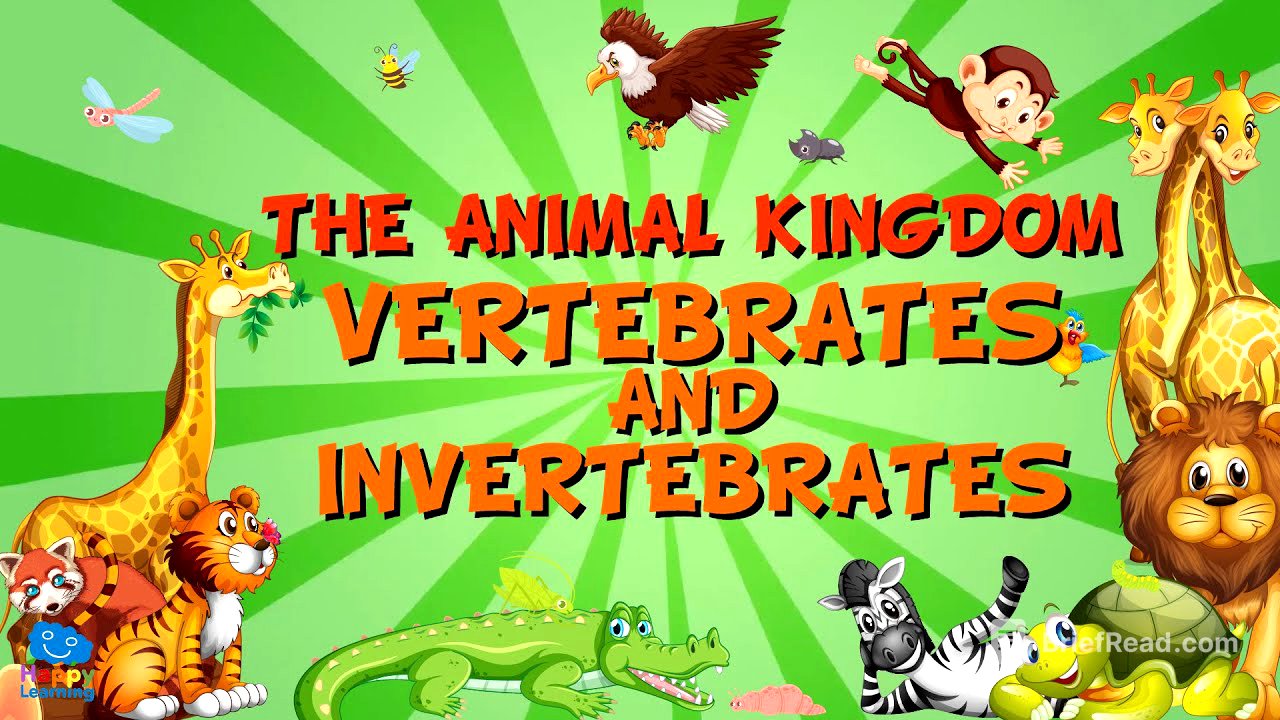TLDR;
This video introduces the animal kingdom, dividing it into two main groups: vertebrates (animals with bones) and invertebrates (animals without bones). It further classifies vertebrates into mammals, birds, reptiles, fish, and amphibians, while invertebrates are divided into arthropods, mollusks, annelids, echinoderms, sponges, and cnidarians. The video uses examples to illustrate each group and emphasizes the importance of caring for nature, the home of all animals.
- Vertebrates have bones and are divided into five groups: mammals, birds, reptiles, fish, and amphibians.
- Invertebrates lack bones and are classified into six groups: arthropods, mollusks, annelids, echinoderms, sponges, and cnidarians.
- Taking care of nature is crucial for the well-being of all animals and living beings.
Introduction to the Animal Kingdom [0:06]
The video starts by introducing the animal kingdom, which the presenter expresses great enthusiasm for. The main topic of the video is to explore and understand the different types of animals that exist. The presenter sets the stage for a lesson that will categorize and explain the various groups within the animal kingdom.
Vertebrates: Animals with Bones [0:32]
The animal kingdom is divided into two primary groups: vertebrates and invertebrates. Vertebrates are animals that possess a skeleton, which includes bones. Examples of vertebrates include elephants, parrots, and frogs. The video shows skeletons of different vertebrate animals like elephants, frogs and fish to illustrate the concept of internal bone structure.
Invertebrates: Animals Without Bones [1:18]
Invertebrate animals lack bones and an internal skeleton. Examples of invertebrates include ants and snails. The key characteristic that defines this group is the absence of a bony internal structure.
Classification of Vertebrates [1:36]
Vertebrates are further classified into five groups: mammals (like dogs), birds (like parrots), reptiles (like geckos), fish (like sharks), and amphibians (like frogs). Each of these groups represents a distinct type of vertebrate animal with unique characteristics.
Classification of Invertebrates [2:33]
Invertebrates are classified into six groups: arthropods (like crabs), mollusks (like octopuses), annelids (like worms), echinoderms (like sea urchins), sponges, and cnidarians (like jellyfish). The video highlights the diverse range of animals that fall under the invertebrate category.
Vertebrate vs. Invertebrate Examples [3:41]
The video tests the viewer's understanding by presenting examples of animals and asking whether they are vertebrates or invertebrates. A bear is identified as a vertebrate and a mammal, while a slug is identified as an invertebrate and a mollusk. An eagle is correctly identified as a vertebrate bird, and bees are recognized as invertebrate arthropods that produce honey.
Review of Key Concepts [4:57]
The video reviews the main points covered: the animal kingdom is divided into vertebrates (with bones) and invertebrates (without bones). Vertebrates are classified into mammals, birds, reptiles, fish, and amphibians, while invertebrates are classified into arthropods, mollusks, annelids, echinoderms, sponges, and cnidarians.
Importance of Caring for Nature [6:12]
The video concludes by emphasizing the importance of taking care of nature, which is the home of all animals and living beings. It encourages viewers to keep forests and seas clean to make the world a better place for everyone.









